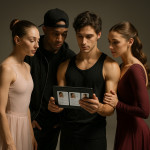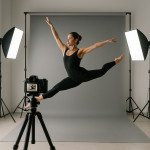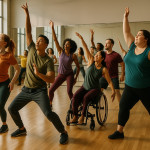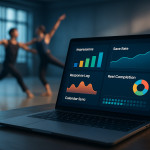AR and VR in dancer portfolios: immersive demos that convince distant recruiters
You no longer need to hop on a plane to prove you can command a stage. By weaving Augmented Reality (AR) and Virtual Reality (VR) clips into your dancer portfolio, you give recruiters a front-row seat—wherever they are. This guide explains why immersive media boosts callbacks, what gear and platforms you need, and how to deploy AR and VR content without breaking budgets or loading speeds.
Why immersive media now dominates dancer discovery
Talent scouts sift through hundreds of traditional showreels each week. AR and VR cut through that noise by letting decision-makers:
- Assess spatial awareness—see how you travel through depth, not just across a flat frame.
- Test versatility fast—switch camera angles or embedded choreographies at will.
- Experience presence—feel the energy of lifts, landings and eye contact in 360°.
A recent industry poll revealed that portfolios featuring immersive clips secured 27 % more remote callbacks than those without—proof that early adopters already reap the rewards.
AR vs VR: which format fits your dance style?
| Criteria | Augmented Reality (AR) | Virtual Reality (VR) |
|---|---|---|
| Viewer equipment | Smartphone/tablet camera | Headset (Meta Quest, HTC Vive) |
| Best for | Solo tricks, quick footwork, costume previews | Ensemble pieces, lifts, site-specific works |
| File size estimate | 20–50 MB per loop | 150–400 MB per three-minute scene |
| Interaction | Place dancer in recruiter's room | Transport recruiter into your stage |
| Budget range* | €300–€1 000 | €1 200–€4 000 |
*Budgets assume one-day shoot, basic edit and hosting.
Four steps to add AR and VR clips to a dancer portfolio
1. Plan scenes that maximise depth
Choose choreography that uses varying levels—floor work, jumps, diagonals—to showcase what flat videos can't. Keep clips under three minutes to avoid VR fatigue.
2. Capture with the right gear
- VR: 360° cameras such as Insta360 X3 or GoPro MAX, rigged on a monopod at chest height.
- AR: Motion-capture apps (Move.ai, Rokoko) or Lidar-enabled iPhone for volumetric capture.
Record ambisonic audio so spatial sound matches visual immersion. A lapel mic per dancer guarantees crisp breaths and footwork details.
3. Edit for low friction playback
Render VR clips in 5.7K, 30 fps H.265; compress to stay under 400 MB. For AR, export glTF or USDZ; loop length 20 seconds works best for recruiter attention spans.
4. Host and embed with fail-safe fallbacks
Upload VR videos to platforms like Vimeo 360 or YouTube VR, then <iframe></iframe> the player into your portfolio. For AR, host files on 8th Wall or Echo3D and inject a “View in your space” button. Always supply a standard HD video fallback so older devices still display content.
Boost visibility: SEO tactics for immersive dancer portfolios
Search engines now index 3D assets. Rename files with descriptive keywords—hip-hop-footwork-ar-loop.usdz—and include AR and VR in dancer portfolios as alt text. Pair clips with concise captions: style, bpm, filming specs.
Internal linking raises topical authority. After you optimise AR assets, refine your self-tape video standards and integrate 360° visuals to create a multi-format showcase flow.
Loading speed matters—here's how to keep pages snappy
- Lazy load VR iframes so they boot only when scrolled into view.
- Serve AR files via a CDN with HTTP/2.
- Defer heavy scripts; inline the first 15 KB of critical CSS.
These tweaks help your profile meet Core Web Vitals, preventing recruiters from bouncing before the wow-moment.
Common pitfalls to avoid
- Over-editing: excessive transitions break immersion.
- Ignoring lighting consistency; VR amplifies contrast shifts.
- Hosting on personal drives—files may throttle or break.
- Skipping consent: crew and co-dancers must agree to 360° capture as backstage areas might appear.
Case study: landing an overseas contract in 10 days
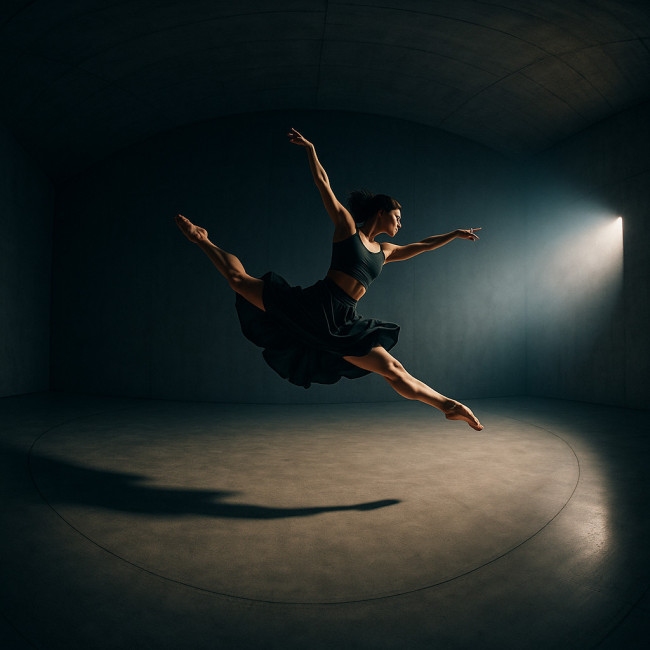
Contemporary dancer Alina uploaded a 90-second VR scene of her floor-to-aerial solo. Within a week, a Berlin choreographer watched the clip twice, checked her availability calendar on the Artfolio dancers directory, and sent a contract. The recruiter cited “feeling on stage with you” as the deciding factor—proof the immersive approach shortens hiring cycles.
Integrate immersive rehearsals for collaborative edge
Offer directors a VR rehearsal preview before they book flights. Coupling that with virtual reality rehearsal tech shows you value efficiency and sustainability—an extra tick in corporate-social-responsibility checklists.
Budget breakdown cheat-sheet
- 360° camera rental: €80/day
- Lidar iPhone hire: €50/day
- Editing software (one-month licence): €35
- AR hosting (2 GB plan): €15/month
- Vimeo 360 Pro: €20/month
Total first-month outlay: roughly €200—often recouped with one mid-tier corporate gig.
Future-proofing: upcoming standards to watch
OpenXR will soon unify headset playback, meaning one export fits all devices. Meanwhile, Google's Scene Viewer already supports volumetric dance loops. Prepare by keeping master files in 6K and exporting down as standards evolve.
Interactive check-up: are you ready for immersive content?
FAQ
- Do recruiters really watch VR clips in headsets?
- Surveys show 42 % of casting teams own at least one headset. Those without can still drag the view in a browser, so the file remains useful.
- Will AR loops slow my mobile site?
- Not if you host them on a CDN, lazy-load scripts, and compress to under 5 MB per second of animation.
- Does immersive media replace traditional showreels?
- No. Use AR and VR as a highlight layer. Keep a concise 60-second sizzle reel for quick scans.
- How do I caption AR assets for accessibility?
- Add a text description of movements and music under the viewer, and offer an audio-described version for low-vision recruiters.
- Can I monetise my VR rehearsals?
- Yes. Some studios sell virtual class tickets or licensed clips for training apps, creating an extra income stream.
Turn theory into bookings: your next move
Immersive media isn't a gimmick—it's a recruiter shortcut. Map one key routine, capture it in AR or VR, host it smartly, and update your Artfolio listing by tonight. The next casting call could come from a continent away, but feel like they were in the room with you.
Ready to upgrade? Publish your first AR loop this week and track callback rates—you'll wonder how you ever booked gigs without it.
